Simon Madziar
Simon Madziar
Trusts can seem like a complex financial tool reserved only for the ultra-wealthy. However, they are surprisingly versatile and can offer significant benefits for asset protection, tax planning, and managing your estate. For families and business owners in Australia, understanding how trusts work is a crucial step toward securing your financial future and ensuring your assets are managed according to your wishes. Setting up the right structure can give you peace of mind, knowing your wealth is protected from creditors and that you are making the most of available tax advantages. Trusts are a cornerstone of effective financial strategy, allowing you to control how your assets are distributed to loved ones, support charitable causes, or provide for someone with special needs. This guide will walk you through the concept of a trust and explore the seven most common types available in Australia. By the end, you'll have a clear understanding of how each one works, their unique benefits, and which might be the right fit for your financial goals. A trust is a legal arrangement where one person or entity, the trustee, holds assets on behalf of other people, known as the beneficiaries. The person who creates the trust and transfers the assets into it is called the settlor. The rules that govern how the trust operates are set out in a legal document called the trust deed. Think of a trust as a secure box where you place your assets. The trustee is the guardian of that box, legally bound to manage its contents according to the instructions you've provided in the trust deed. The beneficiaries are the people who will ultimately benefit from the assets inside the box. The key parties involved are: Trusts come in various forms, each designed for different purposes. Here are the seven main types you'll encounter in Australia. A discretionary trust, commonly known as a family trust, is one of the most popular trust structures in Australia. Its key feature is flexibility. In this trust, the trustee has the "discretion" to decide which beneficiaries receive income or capital from the trust and in what amounts each year. The beneficiaries do not have a fixed entitlement to the trust's assets. Instead, they are part of a wider class of potential beneficiaries, often family members. This structure allows the trustee to distribute income in a tax-effective manner, typically by allocating it to beneficiaries on lower marginal tax rates. Benefits: Drawbacks: In a fixed unit trust, the beneficiaries' entitlements to the income and capital of the trust are fixed. These entitlements are represented by "units," similar to shares in a company. Each unitholder receives a distribution of income and capital in direct proportion to the number of units they hold. For example, if you hold 25% of the units in a fixed unit trust, you are entitled to 25% of the trust's annual income and 25% of its capital. This structure is often used by unrelated parties who want to pool their funds for an investment, such as purchasing a commercial property. Benefits: Drawbacks: A hybrid trust, as its name suggests, combines features of both discretionary and fixed trusts. It has both unitholders with fixed entitlements and discretionary beneficiaries. This structure is designed to offer the best of both worlds: the certainty of a fixed trust and the flexibility of a discretionary trust. For instance, the trustee might be required to pay a fixed amount of income to unitholders each year, with the discretion to distribute the remaining income among a class of other beneficiaries. Hybrid trusts are complex and require expert advice to set up correctly. Benefits: A testamentary trust is a trust that is established through a will and only comes into effect after the will-maker's death. Instead of leaving assets directly to a beneficiary, the will directs that the inheritance be held in a trust for them. This type of trust is a powerful estate planning tool. It can protect a beneficiary's inheritance from creditors, legal claims, or a relationship breakdown. It also offers significant tax advantages, especially for beneficiaries who are minors (under 18). Income distributed to a minor from a testamentary trust is taxed at adult marginal tax rates, rather than the much higher penalty rates that usually apply. Benefits: A Special Disability Trust (SDT) is a specific type of trust designed to provide for the current and future care and accommodation needs of a person with a severe disability. To be eligible, the beneficiary must meet the definition of "severely disabled" as set out in social security law. These trusts have specific rules about how the funds can be used, primarily for the beneficiary's care and accommodation. They offer significant concessions from Centrelink and the Department of Veterans' Affairs. A key benefit is that assets up to a certain limit (currently $832,750 as of July 2025) held within an SDT are exempt from the assets test for the beneficiary's social security payments. Benefits: A superannuation trust, most commonly a Self-Managed Super Fund (SMSF), is a trust structure used to save for retirement. In an SMSF, the members are also the trustees, meaning they are responsible for managing the fund's investments and complying with superannuation law. The sole purpose of a superannuation trust is to provide retirement benefits to its members. The government provides significant tax concessions to encourage retirement savings. For example, investment earnings within the fund are typically taxed at a maximum of 15%, and once members enter the retirement phase, earnings on assets supporting their pension are tax-free. Benefits: Drawbacks: A charitable trust is established for a charitable purpose, such as the relief of poverty, the advancement of education or religion, or other purposes beneficial to the community. Unlike other trusts, it does not have specific individuals as beneficiaries; its beneficiary is the charitable purpose itself. To be recognised as a charity, the trust must be registered with the Australian Charities and Not-for-profits Commission (ACNC). Charitable trusts are eligible for significant tax concessions, including income tax exemption, provided they meet strict legal requirements. They are a way for individuals and families to create a lasting legacy of giving. Benefits: Establishing a trust is a formal legal process that should not be undertaken lightly. While the exact steps can vary depending on the type of trust, the general process includes: Given the complexity and the significant legal and financial implications, it is essential to seek professional advice from a lawyer and an accountant before setting up a trust. They can provide tailored support to ensure the structure is right for you and complies with all legal obligations. Understanding the different types of trusts available in Australia is the first step toward leveraging these powerful tools for your benefit. Whether your goal is to protect your family's assets, minimise your tax bill, or create a lasting legacy, there is likely a trust structure that can help you achieve it. Navigating the complexities of trusts can be overwhelming, but you don't have to do it alone. With the right professional guidance, you can implement a robust strategy that gives you peace of mind and secures your financial future for generations to come. If you're ready to explore how a trust could work for you, speak to our team of experts. We can provide the tailored support you need to make informed decisions and build a secure financial foundation. Disclaimer: This blog post provides general information only and does not constitute legal or financial advice. Consult with a qualified professional for personalized advice. Laws and regulations regarding trusts are subject to change. The information in this post is based on Australian law and may not be applicable in other jurisdictions. We are not liable for any actions taken based on the information provided in this blog post. Case studies and examples are for illustrative purposes only and do not guarantee specific outcomes.7 Types of Trusts in Australia You Need to Know
What is a Trust?
The 7 Main Types of Trusts in Australia
1. Discretionary Trust (Family Trust)
2. Fixed Unit Trust
3. Hybrid Trust
4. Testamentary Trust
5. Special Disability Trust
6. Superannuation Trust (Self-Managed Super Fund)
7. Charitable Trust
Types of Trusts in Australia at a Glance
Trust Type Description Common Uses
Discretionary (or Family) Trust The trustee has the discretion to decide which beneficiaries receive income or capital and in what amounts. Asset protection, tax planning through income splitting, and flexible wealth distribution among family members.
Unit Trust Ownership is divided into fixed 'units,' similar to shares. Distributions of income and capital are made to unitholders in proportion to the units they hold. Joint commercial ventures or property investments between unrelated parties, providing clear ownership stakes.
Hybrid Trust Combines elements of both discretionary and unit trusts, offering a mix of fixed entitlements and flexible distribution options. Complex business structures, succession planning, and catering to both fixed and discretionary beneficiary needs.
Testamentary Trust A trust created within a will that only becomes active after the will-maker's death. Protecting inheritances for beneficiaries, tax-effective income distribution for minors, and safeguarding assets from creditors or relationship breakdowns.
Special Disability Trust Allows relatives to contribute up to $832,750 in assets for benefit of family member with severe disability Provides for disabled beneficiary without reducing social security entitlements
Charitable Trust Established exclusively for a legally recognised charitable purpose, such as alleviating poverty, advancing education, or promoting religion. Philanthropic giving, managing donations for non-profit organisations, and accessing specific tax concessions.
Superannuation Fund A trust specifically designed to hold and manage retirement savings for its members in a tax-effective environment. Accumulating wealth for retirement, providing death and disability benefits, and accessing government superannuation concessions.
How to Set Up a Trust in Australia
Take Control of Your Financial Future






